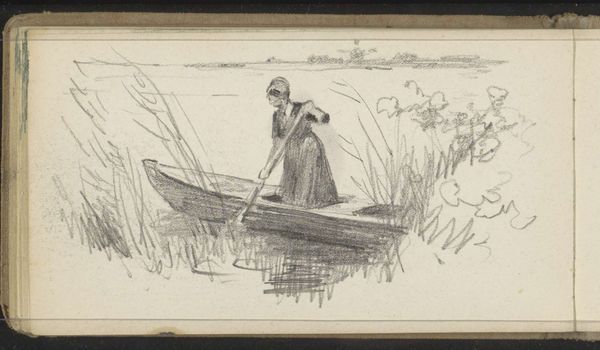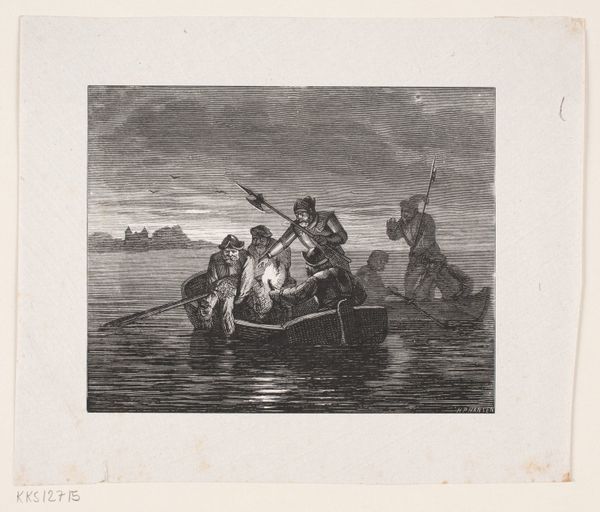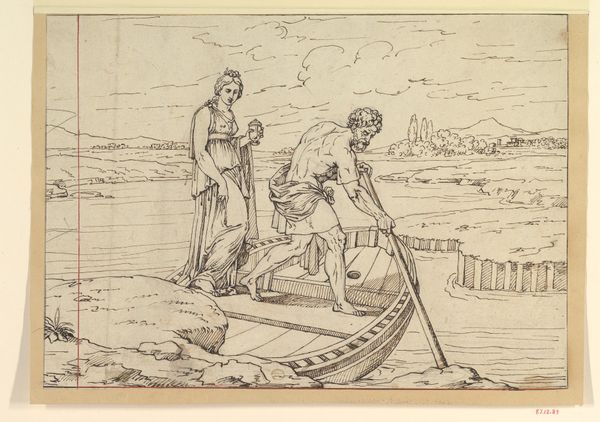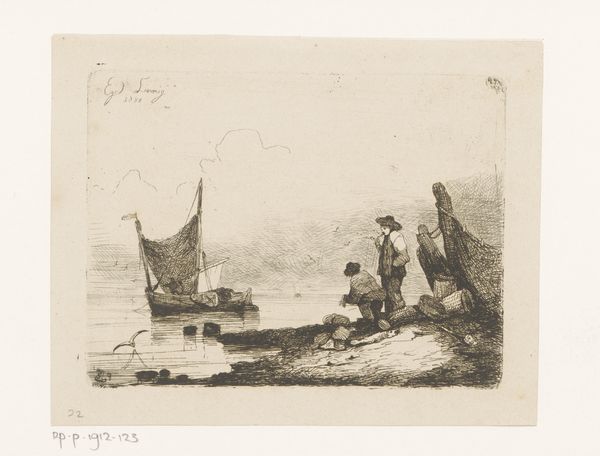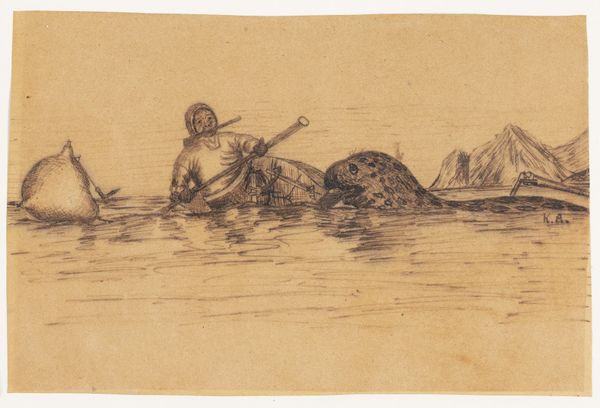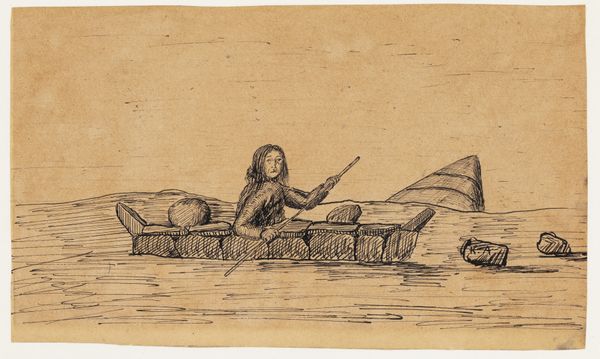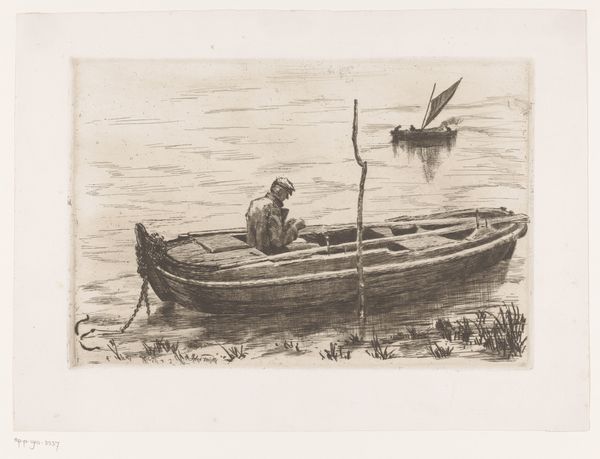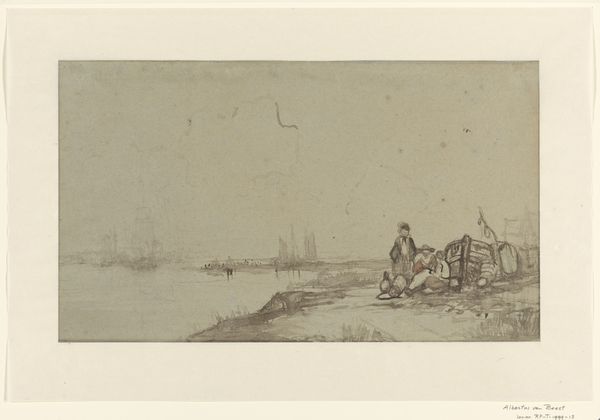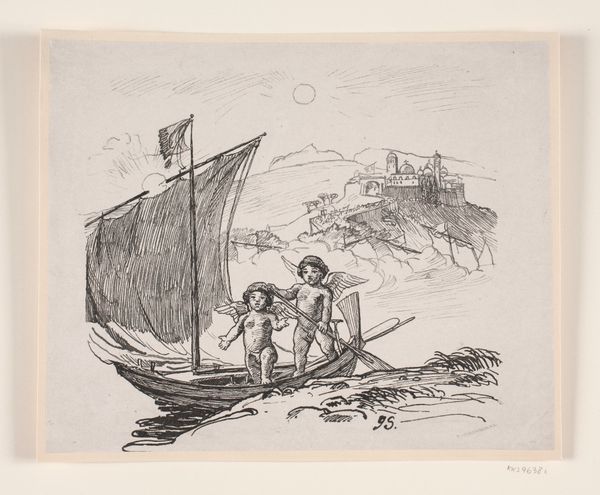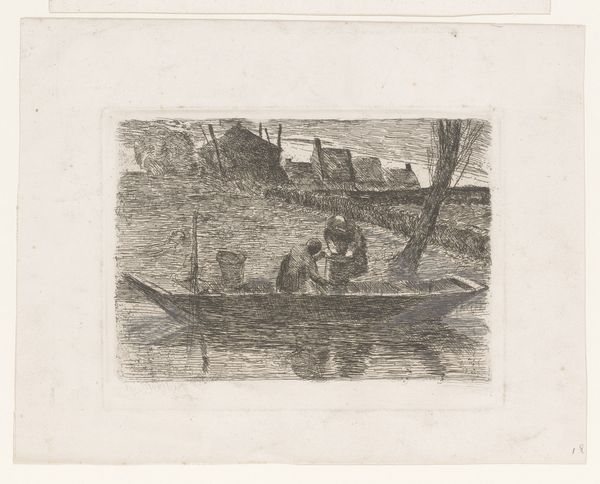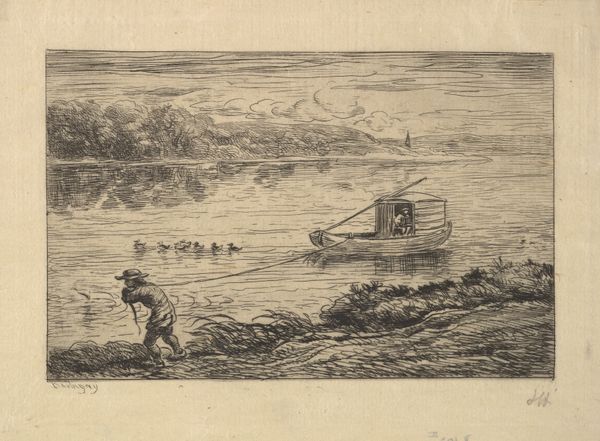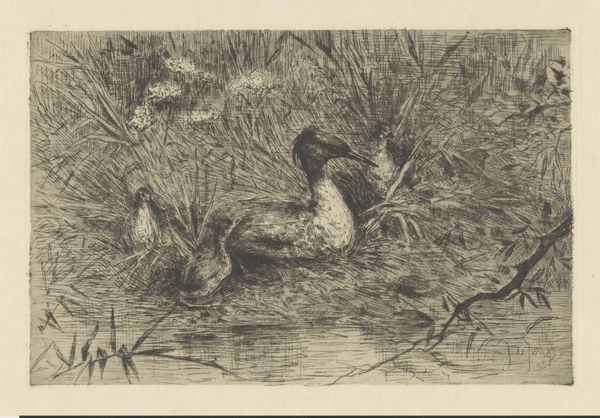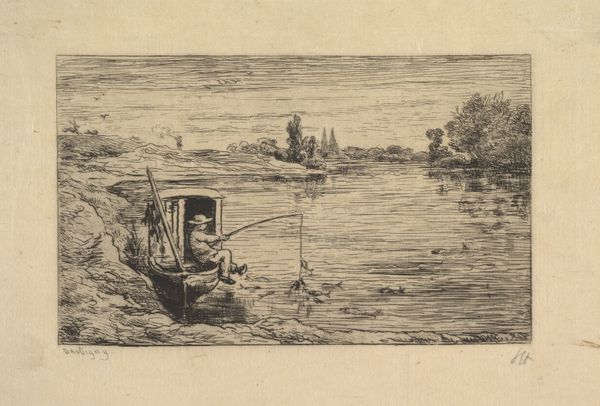
drawing, print, ink, woodcut, pen
#
drawing
#
ink drawing
# print
#
landscape
#
ink
#
woodcut
#
pen work
#
pen
#
genre-painting
Dimensions: 58 mm (height) x 76 mm (width) (bladmaal)
Curator: Looking at this rather modest sized pen and ink drawing, titled "Ringen på Hastrup," created in 1856 by H.C. Henneberg, I'm immediately drawn to the artist's meticulous technique and sense of humor. It resides here at the SMK, the Statens Museum for Kunst. What do you see? Editor: Well, the initial impression is one of quiet domesticity, if such a thing exists out on the water. A boat with two figures amidst tall reeds; there’s an almost melancholic feel despite what appears to be a genre painting. I’m picking up strong class associations too. Curator: Indeed. The etching, with its delicate penwork, portrays figures who appear deeply connected to their landscape and somewhat isolated at the same time. There is something about their clothes, as they don't fit into high society class or bourgeois class categories. I wonder how class or power play out here in relation to their natural surroundings? Editor: It's a good question. Consider how this image was created at the apex of colonial exploits for this society. Although it ostensibly captures an innocent waterscape, can we completely divorce it from the context of a period rife with profound socio-economic tensions rooted in expansion, colonialism, and gender and class divides? Is there a darker undercurrent in how "nature" is framed here, both controlled and observed, with this etching? Curator: Your observation provokes interesting parallels. Certainly, one could argue the way Henneberg has painstakingly crafted the scene hints at that mindset of a controlled environment; perhaps what's omitted carries an even heavier weight, you could easily transpose those gender and class issues into a wider lens and relate the symbolist notion of absence. Do you consider the material in which its made speaks to this broader perspective of art? Editor: Definitely. The act of creating this print - multiplying images which allowed a distribution on the culture and values that comes within. But what's most crucial to this particular piece, that it makes its commentary rather subliminally. Curator: Absolutely. This conversation made me think of how even a serene landscape contains more profound echoes, resonating throughout time. Editor: It certainly reminds me to be vigilant about the unexamined historical frameworks that even seemingly gentle images carry within.
Comments
No comments
Be the first to comment and join the conversation on the ultimate creative platform.

